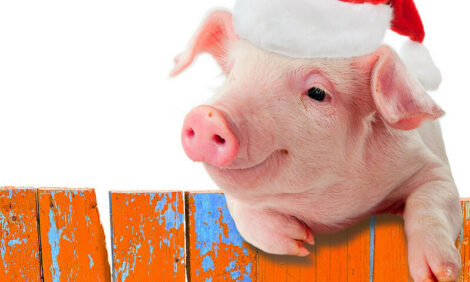



New Priorities Set after Rinderpest Eradication
GLOBAL - The eradication of the deadly rinderpest virus is a model for other diseases, according to FAO.FAO Director-General Jacques Diouf said earlier this week: "While we are celebrating one of the greatest successes for FAO and its partners, I wish to remind you that this extraordinary achievement would not have been possible without the joint efforts and strong commitments of governments, the main organisations in Africa, Asia and Europe, and without the continuous support of donors and international institutions."
Mr Diouf made the comment as FAO's member countries officially recognised global freedom from the deadly cattle virus.
The FAO Conference, the highest body of the UN agency, adopted a resolution declaring global freedom from rinderpest. The resolution also called on the world community to follow up by ensuring that samples of rinderpest viruses and vaccines be kept under safe laboratory conditions and that rigorous standards for disease surveillance and reporting be applied.
The declaration is the final step in a decades-long global campaign implemented by FAO, in close coordination with the World Organisation for Animal Health (OIE), and other partners to eradicate rinderpest.
This highly infectious disease has killed many millions of cattle, buffalo and other animals, and caused hunger and economic hardship, primarily in Africa, Asia and Europe.
The announcement followed verification last month by the World Assembly of OIE, that the disease was no longer circulating in its natural habitat. The last outbreak of rinderpest was registered in wild buffalo in Kenya in 2001, and the last vaccination took place in 2006.
Bernard Vallat, OIE Director-General, said: "This successful eradication shows that actions against animal diseases do not come within concepts of agricultural or merchant good but within the concept of Global Public Good because by alleviating poverty, contributing to public health and food security, and improving market access as well as animal welfare, they benefit all people and generations in the world."
A collaborative effort
Since 1994, FAO has spearheaded the Global Rinderpest Eradication Programme (GREP) with the OIE, the International Atomic Energy Agency (IAEA) and other institutional partners, governments, regional organizations such as the Interafrican Bureau for Animal Resources, and communities worldwide.
These international cooperation and coordination mechanisms – funded by the European Union, Japan, Ireland, Italy, France, Sweden, the United Kingdom, the United States, the UN Development Programme (UNDP) and others and supported by academic and research institutions across the world – have been fundamental for the achievement of rinderpest eradication, particularly in the poorest countries.
The programme's success had demonstrated the importance of political and financial support for veterinary services, community outreach, regional cooperation, and research.
Next steps
Although the rinderpest virus no longer circulates amongst live animals, it is still kept in a number of laboratories. The immediate post-eradication priority is to guard against reappearance of the disease in animals as a result of accidental or deliberate release from laboratories.
Mr Diouf explained: "Rinderpest is the first animal disease to be eradicated by mankind and the second disease in general after smallpox. We must also focus our attention on measures to be taken to ensure that this result is sustainable and benefits future generations. To do this, a post-eradication strategy should be put in place to prevent any recurrence of the disease."
FAO, OIE and their partners are determined to implement internationally agreed procedures for confining such virus stocks in highly biosecure laboratory facilities.
More about the disease
Rinderpest is a highly contagious viral disease affecting several species of wild and domestic split-hoofed animals, notably cattle and buffalo. Many species, including sheep and goats, can show milder clinical signs of the disease when infected, but the mortality rate can reach up to 100 per cent in highly susceptible cattle or buffalo herds. An outbreak of rinderpest in imported animals in Belgium in 1920 was the impetus for international cooperation in controlling animal diseases, and a key factor leading to the establishment of the OIE in 1924.
Other high-impact animal diseases
-
Peste des Petits Ruminants (PPR) is a highly contagious transboundary animal disease of wild and domestic small ruminants caused by a virus of the same family as the rinderpest virus in cattle and human measles. Affected sheep and goats suffer severe respiratory and digestive problems with high fatality rates.
-
Foot-and-mouth disease (FMD) is a highly contagious viral disease of cloven-hoofed animals characterised by high fever, painful blisters around the mouth, tongue and feet. The infection can be lethal in young animals, such as lambs and piglets. It also causes serious production losses and is a major constraint to international trade in livestock products.
-
Brucellosis is a bacterial infectious disease, causing abortion, infertility and decreased milk yield in cattle, sheep and goats. It may cause serious disease in people as well.
- Rabies is a viral disease of domestic and wild mammals, and can impact agricultural production. In humans, the infection is mostly transmitted by dog bites. The disease poses a serious threat to people's health, especially in children.







